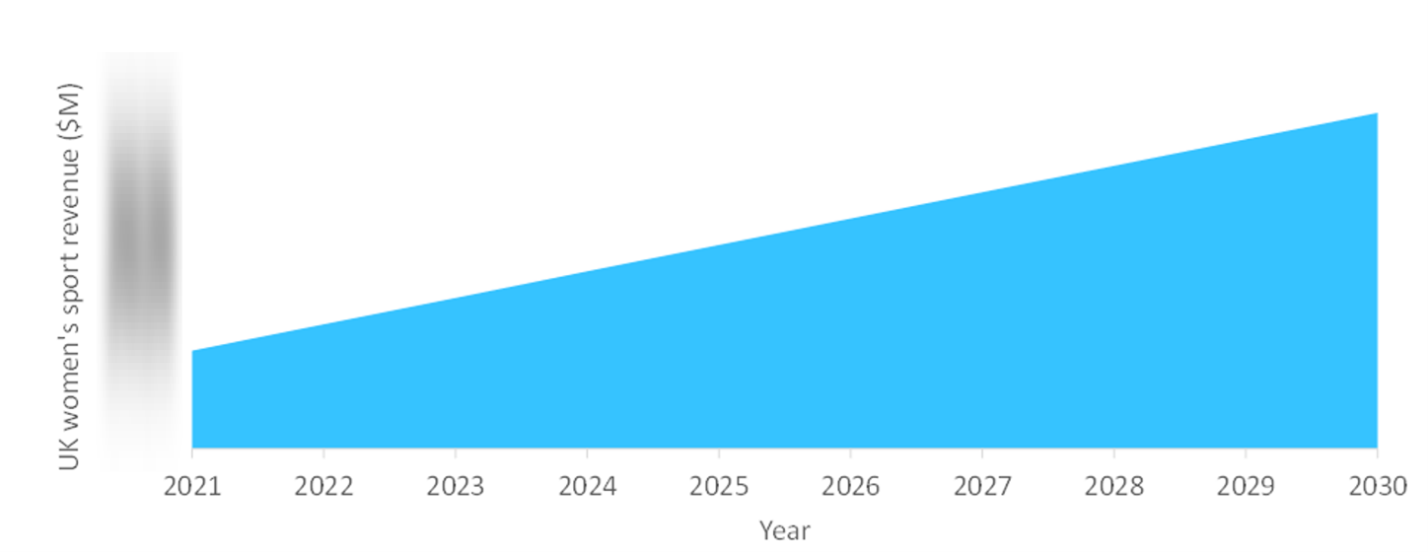The global Women in Sport Market is experiencing growth and transformation, with regional variations in terms of participation, visibility, and market dynamics. The market reflects the increasing recognition of female athletes and their potential in the sports industry.

For more insights into the revenue of women’s sports in the UK, download a free report sample
Here are insights into regional growth and market dynamics:
1. North America:
- Market Maturity: North America has a mature Women in Sport Market, with well-established women's professional leagues in sports like soccer, basketball, and ice hockey.
- Media Coverage: The region benefits from extensive media coverage of women's sports, including collegiate and professional events, contributing to strong viewership and sponsorship deals.
- Investment: The growth of women's sports in North America is supported by significant investments in infrastructure, training facilities, and grassroots programs.
2. Europe:
- Diverse Landscape: Europe features a diverse Women in Sport Market with strong traditions in soccer, tennis, and athletics. Countries like the UK, France, and Germany have well-developed women's sports sectors.
- Growth in Soccer: Women's soccer has gained prominence, with growing viewership, sponsorship deals, and investment in women's leagues.
- Inclusive Policies: European sports organizations often lead in promoting gender equality and inclusivity, fostering the growth of women's sports.
3. Asia-Pacific (APAC):
- Emerging Market: APAC is an emerging Women in Sport Market with significant growth potential. Countries like China, Japan, and Australia are investing in women's sports programs.
- Olympic Influence: The Olympics have played a role in promoting women's participation in sports across the APAC region, leading to increased visibility and investment.
4. Latin America:
- Soccer Dominance: Soccer is a dominant force in Latin American women's sports. Countries like Brazil have strong women's soccer teams with a dedicated fan base.
- Challenges: While there is talent and passion for women's sports, Latin America faces challenges in terms of infrastructure, funding, and gender equity.
5. Middle East and Africa:
- Emerging Opportunities: The Middle East and Africa are emerging Women in Sport Markets with growing interest in women's sports participation.
- Challenges and Progress: The region faces cultural and societal challenges in promoting women's sports, but initiatives are underway to overcome barriers.
Market Dynamics:
-
Media and Broadcasting Rights: Regional variations exist in terms of media coverage and broadcasting rights for women's sports. Developed markets often have established partnerships with broadcasters, while emerging markets are actively working to secure coverage.
-
Sponsorship and Investment: Investment in women's sports varies by region. Developed regions tend to attract more sponsorships and funding, while emerging markets are focused on grassroots development and infrastructure.
-
Cultural and Societal Factors: Cultural attitudes and societal norms influence the growth of women's sports in different regions. Regions with more progressive views on gender equality tend to have a more robust Women in Sport Market.
-
Government Support: Government support and policies play a critical role. Regions with supportive government initiatives often see more significant advancements in women's sports.
-
Fan Engagement: Fan engagement and fan base development differ by region. Strong fan support can drive revenue and sponsorship opportunities in established Women in Sport Markets.
-
International Events: Hosting international events, such as Women's World Cups and Championships, can boost visibility and investment in women's sports in specific regions.
In conclusion, the global Women in Sport Market displays regional variations in terms of growth, visibility, and market dynamics. While established markets like North America and Europe lead the way, emerging markets in Asia-Pacific and Latin America offer significant growth opportunities. Continued efforts to promote gender equity, invest in infrastructure, and increase media coverage will contribute to the continued growth and recognition of women's sports worldwide.


